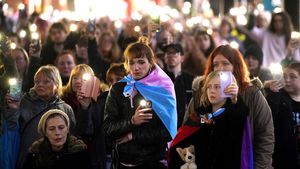Morgan State University has sported a "spite wall" for over 80 years. On Tuesday, it finally came down.
Stretching from the college's entrance on Hillen Street to the nearby Northwood Shopping Center, the barrier was erected in the early 1940s by White Baltimore residents to keep university students at the historically Black college from entering their neighborhood.
The school moved its location to the predominantly-White city in 1917, and was cited as a force that "exacerbated" racial tensions when it switched from a private institution to public at the benefit of Black residents in 1939. In response, Baltimore became one of the first cities to implement policies restricting where Black people could live.
“For the white community, this spite wall was to send a signal and to physically create a divider that would symbolize the segregation that they stood for,” said Dale Green, a professor and architectural historian at Morgan State, via NBC. “They were not supportive of the integration of African Americans into the greater society. The wall was to fortify the whites from the Blacks.”
At the time, college trustees called the wall “discriminatory to Morgan College" and pushed against it, but the project was ultimately approved and began construction in 1942. The wall stood during the Civil Rights movement, sparking Morgan State students to stage one of the first anti-segregation sit-ins at the Northwood Shopping Center.
Students and staff watched as the wall came down this week, leaving only a small section as a historical marker. University President David Wilson said that they wanted to preserve history while also removing the hateful barrier that separated communities.
“We had no choice but to tear it down,” he told NBC. “We couldn’t have this symbol of hate staring down every single day. This was an easy decision for us. It was time for us to tear down that hate.”


















































